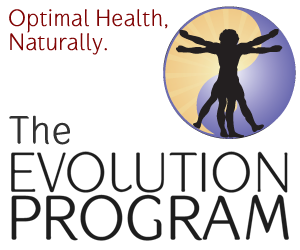The Paleo Diet and Safe Starches
Over the last week or two, there has been a lot of buzz around the interwebs about the topic of “safe starches”. Paul Jaminet introduced the term, through his Perfect Health Diet book, and supporting blog. According to Jaminet, the “safe starches” are taro, plantains, yams, white potatoes, sweet potatoes, white rice and berries. Jaminet classes these particular foods as “safe” because they are mostly free from the lectins, anti-nutrients and enzyme inhibitors that can be found in most other grains, legumes, and dairy products. The term “safe” was not intended to mean “safe for anyone to eat as much as they like”, so what business do the Paleo Diet and safe starches have associating with each other?
Many of the low-carb and paleo experts have been chiming in on what “safe starches” really are, if there is actually any such thing, and whom they would be appropriate for (if anyone). Jimmy Moore, the famous Livin La Vida Low-Carb blogger and podcaster opened up the floor on his blog to any experts that wished to chime in on the topic, and received a huge amount of qualified replies. He opened the debate with the following:
“Following my March 2011 podcast interview with a man named Paul Jaminet, author of The Perfect Health Diet, there has been a steadily increasing amount of concern from low-carbers writing to me about whether he is on to something with what he describes in his book and blog as “safe starches”–namely white rice, white potatoes, yams and more. Say what?! Wait wait wait, NOW starches are GOOD for you and can even be deemed as “safe” for people who are obese, diabetic or otherwise metabolically compromised in some way? The reasoning behind this I gotta hear.”
“It really all boils down to this for me: Why does Jaminet advocate for the consumption of what he describes as “safe starches” when everything about what we seem to know about these foods indicates they are anything but “safe” for most of the population that is metabolically damaged in some form or fashion? I felt this question was far too important for me to ignore any longer because it goes to the very heart of why I support low-carb nutrition for most people to begin with. In my search for answers, I personally contacted many of my fellow low-carb/Paleo expert friends to have them chime in with their thoughts about this idea of “safe starches.” – Jimmy Moore.
Many prominent people in the Paleo and low-carb fields chimed in with their opinion, although it seems that many of them hadn’t even read Jaminet’s book. The list included experts such as Robb Wolf, Chris Masterjohn, Dr. Kurt Harris, Dr. Loren Cordain, Chris Kresser, and Dr. Jeff Volek, to name but a few. The opinions were wide and varied, ranging from “nonsense” to “interesting concept”, which really shows the diversity of the contributor’s knowledge base and experience. The debate seriously heated up in the comments section of the article, where a little mud slinging can be seen. As far as I can tell, Paul Jaminet himself did not dive into the fray, to defend his theories, but Dr. Jack Kruse and Dr. Kurt Harris engaged in a less than edifying exchange of words.
You can read the article and the comments here.
After being approached by Jimmy Moore to provide his written opinion on “safe starches”, Dr. Kurt Harris posted an entry to his blog finishing up with a very poignant summary of his opinion:
“One can probably eat well over 50% of calories from starchy plant organs as long as the animal foods you eat are of high quality and micronutrient content.
Grass fed ruminants, pastured butter and eggs and wild caught cold water fish are the kernel of a healthy diet, but the fuel source can be larger than the kernel on a caloric basis if the kernel is high quality and consistent.” – Dr Kurt Harris
On October 12th 2011, Paul Jaminet was kind enough to post a response to Jimmy Moore’s questions on his Perfect Health Diet Blog, entitled “Jimmy Moore’s Seminar on ‘Safe Starches’: My reply”. Jaminet began with a few necessary clarifications:
- We advocate a low-carb diet. “Low-carb” to us means eating less than the body’s actual glucose utilization, so that a glucose deficit has to be made up by gluconeogenesis.
- The concept of “safe starches” has nothing to do with their glucose content. “Safe starch” is a term of our invention and refers to any starchy food which, after normal cooking, lacks toxins, chiefly protein toxins. We do not consider glucose to be a toxin, though it may become toxic in hyperglycemia. Thus wheat, which includes gluten and various inhibitors of digestion that survive cooking, is an unsafe starch, while white rice, in which the known toxins (possibly excepting a recently discovered miRNA) are destroyed in cooking, is a safe starch. To say that something is a “safe starch” is not to imply that it is a desirable food for, say, a Type I diabetic.
- Our “regular” diet is not specifically directed at diabetic or metabolically damaged persons. We have a basic diet that is designed for healthy people (represented in the apple – food plate) and we recommend modified versions of the diet for various health conditions – including diabetes.
- We agree that diseases of metabolic derangement may benefit from lower carb consumption than our regular diet. This is especially the case in diabetes, if beta cell loss has reduced basal insulin levels and excessive gluconeogenesis is occurring. In this case, replacing protein rather than providing dietary carbs may be a more helpful strategy.
- We agree that there is no single prescription that is optimal for every person. We often say, borrowing from Tolstoy, that “every healthy person is biologically alike, every diseased person is unhealthy in his own way.” Obesity, for instance, is a heterogeneous disease and there is not a single prescription that will be optimal for every obese person. Diseases of metabolic derangement raise rather complex issues which we explore regularly on our blog. The science remains somewhat unsettled. But we do favor a low-carb approach.
The rest of the article is very interesting, because Jaminet addresses two of the main points of contention brought up by Jimmy, and the majority of the experts who contributed their opinions:
- The theory that low-carb dieters experience a reduced level of systemic mucous production, which reportedly results in dry eyes/mouth, constipation, heartburn, bladder spasms, and lacking energy.
- Is there such a thing as glucose deficiency as proposed by the Jaminets?
I personally picked-up and ran with the idea of “safe starches” as soon as I first read about the idea, because the science seems sound to me.
As you probably read in the preceding text, “safe starches” are not “safe” for everyone. As with everyone who follows a Paleo Template, there are many things to take into consideration, and many variables that can make all the difference on what is right or effective for each individual. Starches on the whole, “safe” or not, cause a spike in blood sugar, and a resultant rise in plasma Insulin concentration. We know that insulin is inflammatory, and producing too much, for too long can result in insulin resistance, leading to diabetes, Alzheimer’s disease, and heart disease. People who already have diabetes have virtually no business eating any starches at all, along with people who have cancer, who should by default be on a ketogenic diet in an attempt to starve any cancer cells of glucose. Lastly, people who live a largely sedentary lifestyle, and therefore have little need for an energy supply beyond that which can be supplied by the dietary fat they consume, have little need for any additional starchy sources of energy. Additional energy provided to the body where none is needed, can easily result in an increase in fat-mass.
On the other hand, if cancer is not an issue, and the person is athletic, with high-energy needs, and a properly functioning metabolism, “safe starches” could definitely be a “safe” and viable supplemental form of food energy.
I have been eating small amounts of white rice, white potatoes, and sweet potato on a fairly regular basis, and have yet to notice any weight gain, or negative physical symptoms. However, considering that I had previously built-up a little obvious insulin resistance, I am still being cautious to consume these foods on gym or fasting days. As with everything in this field, it is up to you to try-out these “safe starches” and figure out for yourself, what the Paleo Diet and safe starches mean to you and your health.
-
If you found this article useful, please click the ‘LIKE’ button below to share on Facebook. We also invite you to leave comments, and join the Paleo Diet News discussion!
Go to www.undergroundnutritionist.com, and download my 30-Day UN-Challenge eBook now……It’s a step-by-step guide to your personal health revolution.
Barry Cripps is a Paleo-based Nutrition and Wellness Consultant, who operates out of Bowling Green, Kentucky.
For more information please visit: www.undergroundnutritionist.com





